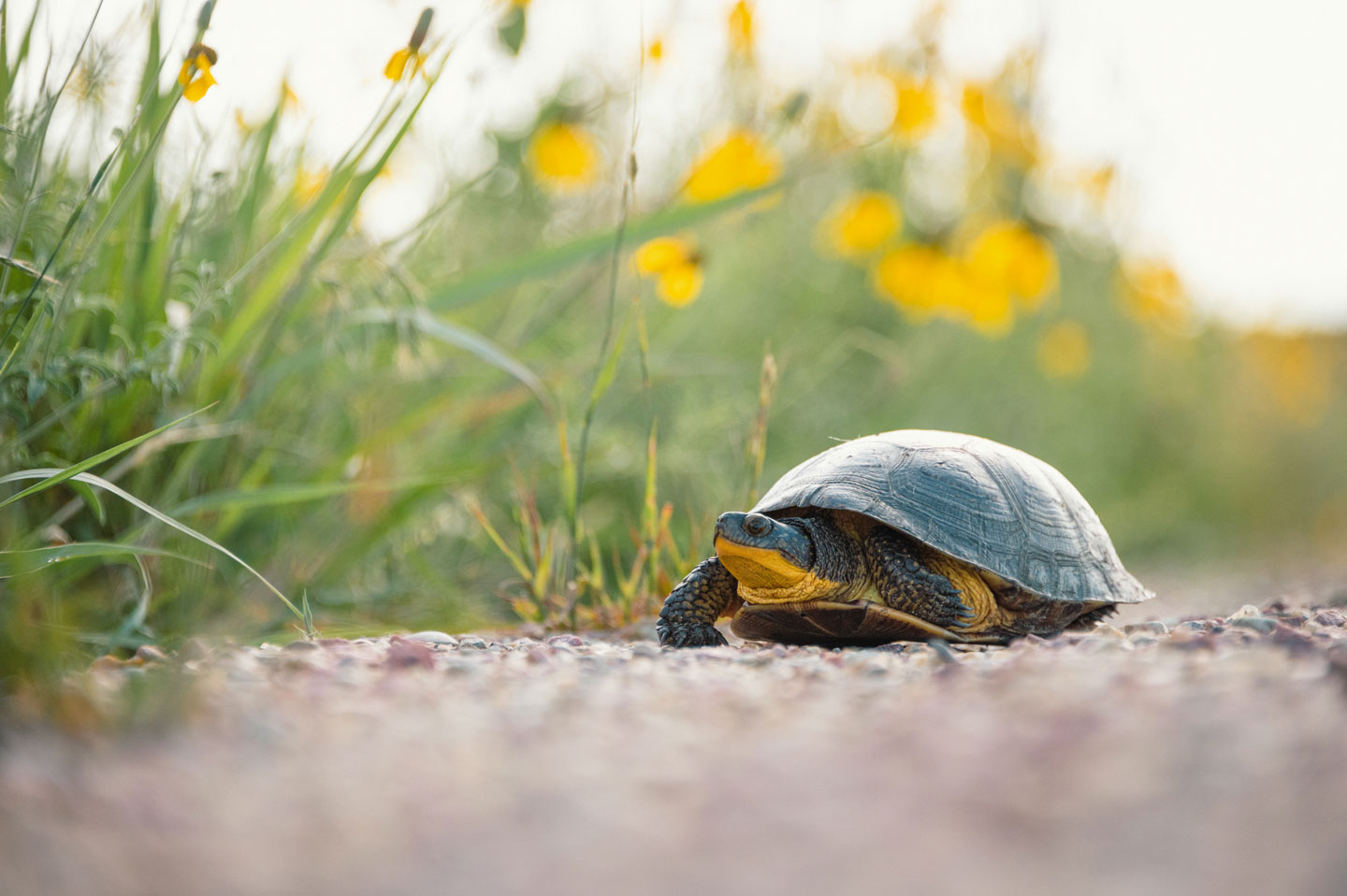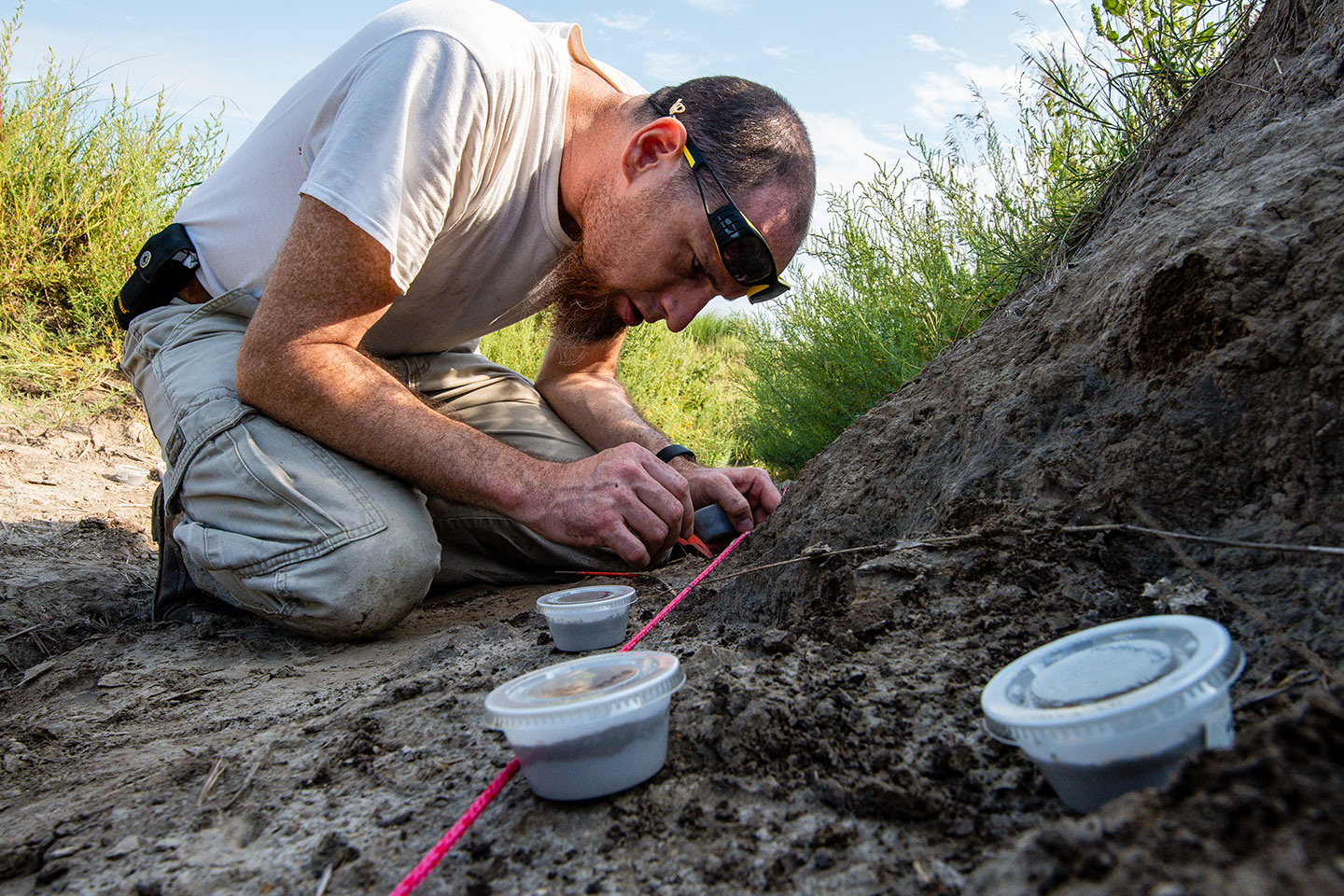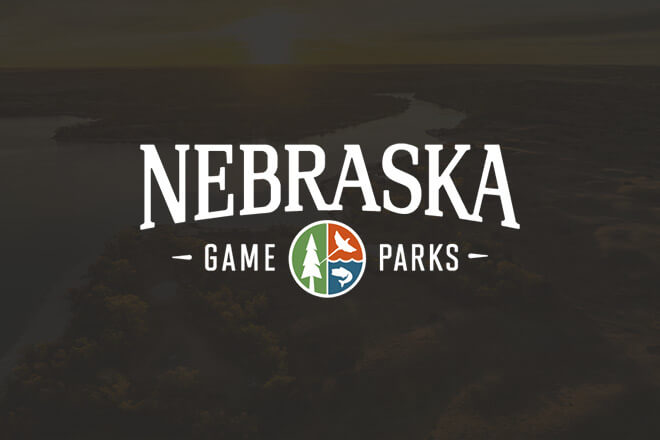Blacknose shiner
Status: Endangered
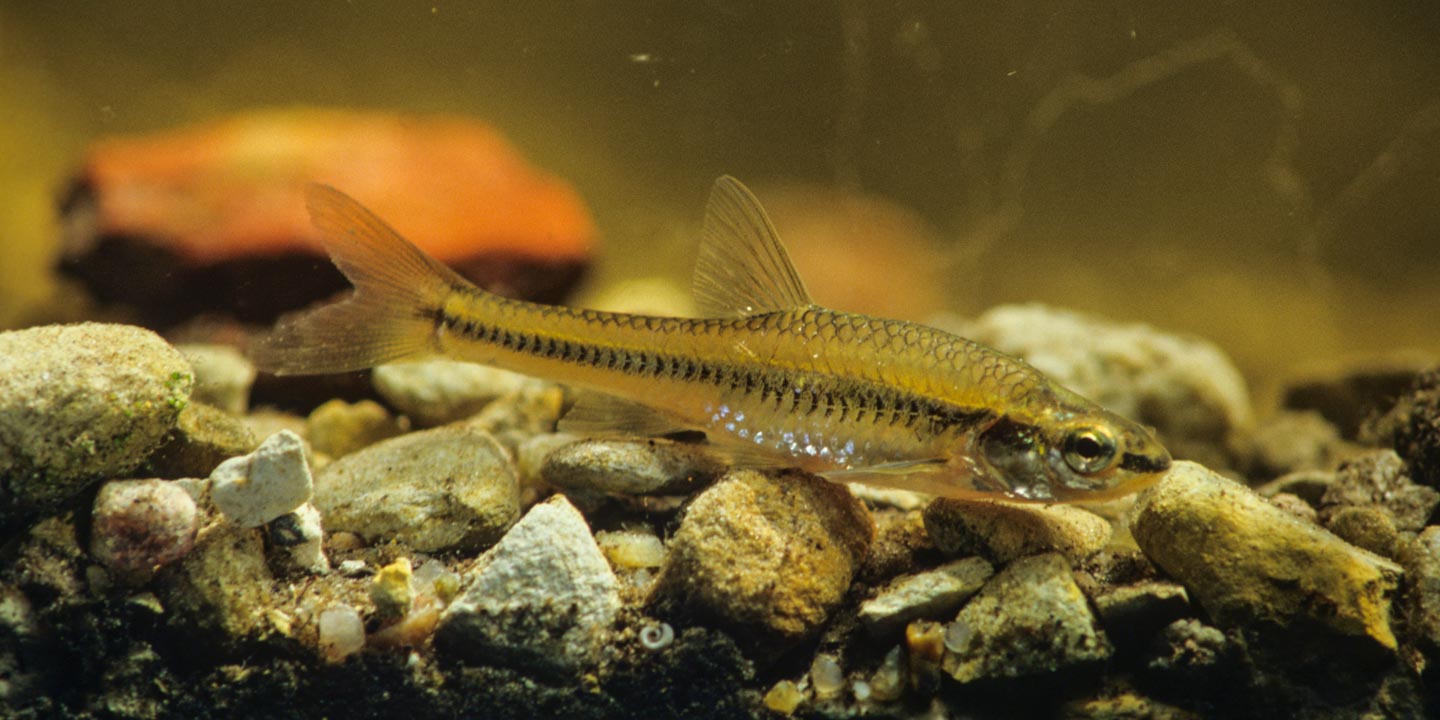
Identification
The Blacknose Shiner (Notropis heterolepis) is a small minnow species reaching lengths between 1.5” – 3”. It is metallic silver or gold with large eyes and a relatively small mouth. It has a black lateral line extending from its nose to its tail which is made of small black crescent-shaped spots. This line appears to continue through the eye. Breeding males have black fins.
It is similar in shape, size and coloration to the Topeka Shiner but the Blacknose Shiner’s lateral line is made of crescent-shaped spots where the Topeka Shiner’s lateral line is a dark, solid colored line. Additionally the lateral line appears to go through the eye of the Blacknose Shiner, but not the Topeka Shiner.
The Blacknose shiner is listed as Endangered on the Nebraska List, but is not listed federally.
Range
The range of the Blacknose Shiner extends from Nova Scotia to Saskatchewan in Canada and south to Missouri and Kansas in the south. It is found primarily in the Hudson Bay, Great Lakes and Mississippi River watersheds.
In Nebraska it is found in a few disjointed populations in the Sandhills and panhandle.
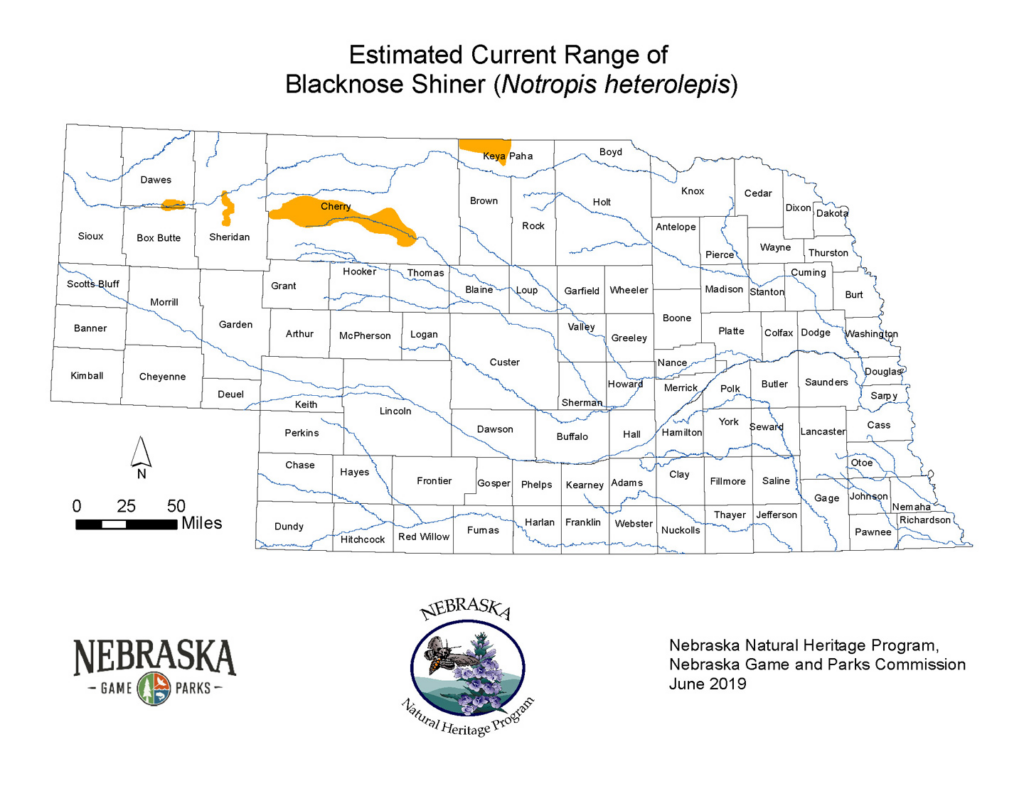
Diet
The Blacknose Shiner is a bottom feeder. It eats a variety of foods including aquatic insects, crustaceans, and algae.
Habitat
The Blacknose Shiner is found in small streams, slow-moving rivers and lakes with sandy bottoms. It prefers streams or creeks with cool, clear water and large pools. It can often be found in areas with extensive vegetation.
Spawning occurs over sandy substrate.
Reproduction
Accounts of the reproduction of the Blacknose Shiner vary greatly with some indicating spawning occurs as early as May and others stating it does not start until June. Again, some report spawning ending in June while other reports indicate August. Spawning times likely vary depending on geographic location and water temperatures.
During spawning, females release up to 1,500 eggs over sandy substrate. No parental care is provided.
Little is known of the life span of the Blacknose Shiner although some reports specify an average life span of two years.
Population status
Little is known of the population trends of the Blacknose Shiner. It is believed to be declining in the southern portion of its range (including Nebraska). There are some strongholds of the population including Michigan, Wisconsin and Ontario.
Management and outlook
The most critical threat to the population of Blacknose Shiners is increased siltation in streams and creeks. With increased silt comes a drop in cool, clear water and a reduction in vegetation – both critical to the survival of the species. The increased silt is caused by poor land management and increased run-off.
Additionally, the reduction in small vegetated backwaters and deep pools within streams and creeks has had an adverse effect on the species population.
For the Blacknose Shiner to survive, better land management is critical. Buffer strips and other practices to reduce run-off and siltation are necessary.
Conservation help
Landowners in the range of the Blacknose Shiner (and other cool water aquatic species) can work to manage land to prevent run-off and siltation.
Individuals can avoid capturing this and other small rare fish species for use as bait.
Additionally, individuals wanting to help species can donate to conservation organizations dedicated to helping this and other Threatened or Endangered Species through research, land management and species conservation.
Finally, taking time to learn about Threatened and Endangered Species as well as sharing that knowledge with others is critical to the development of citizens who care for the future of Threatened and Endangered Species.
References
Threatened and Endangered Fish of South Dakota: Blacknose Shiner. South Dakota Game, Fish and Parks. Accessed December 30, 2017.
Biodiversity of Illinois: Blacknose Shiner. Illinois Department of Natural Resources. 2016.
The IUCN Red List of Threatened Species 2013: Notropis heterolepis. NatureServe. 2013. Accessed December 29, 2017.
http://dx.doi.org/10.2305/IUCN.UK.2013-1.RLTS.T202305A18232087.en
Nebraska’s At-Risk Wildlife: Conserving Species and Their Habitats. Panella. Nebraska Natural Legacy Project. Pages 106-107.
Encyclopedia of Life: Notropis heterolepis. 2016. Accessed December 29, 2017.

